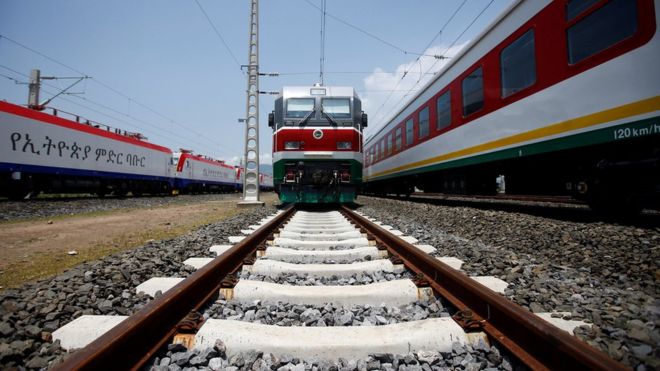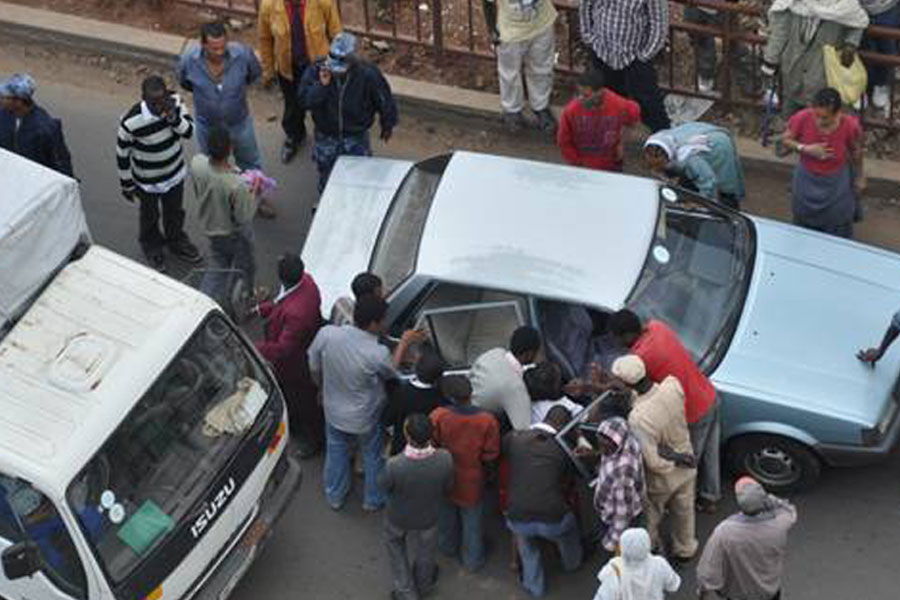
Featured | Sep 14,2019
A railway line from Addis Abeba to a Sudanese port is afoot under the two governments after a Canadian consulting firm completed a feasibility study.
Pacific Consulting Services, which won the bid for consultancy services for close to 1.2 million dollars, has submitted the study for a project covering 1,522Km, with 918Km confounded in Sudan. The African Development Fund has provided the finance to pay the consultant. The initial finance for the study was granted from NEPAD-Infrastructure Project Preparation Facility (NEPAD-IPPF).
The Ethio-Sudan railway project is part of the far-fetched Lamu Port Southern Sudan Ethiopia Transport (LAPPSET) corridor development. It is expected to connect the two countries with Kenya in logistics and transport. The development of Lamu Port, a standard gauge railway line between Port Sudan and Addis Abeba, three airports, port cities, an oil refinery and multiple road networks are all part of this ambitious project.
The LAPPSET project was conceived in 1975, and the Kenyans revived it in the 2000s. The total completion cost is estimated to reach 40 billion dollars if it is realised by 2045. The China Communications Constructions Company broke ground on the development of the Lamu Port in 2012, which will have 32 berths, with three beginning operation last May.
Ethiopian and Sudanese authorities requested the African Development Bank (AfDB) for financial assistance in 2016.
The two countries have signed multiple bilateral agreements, the most vital being Ethiopia's utilisation of the Sudan port. In 2018 an agreement was reached that the Ethiopian Railway Corporation (ERC) would be the executing agency with the railway route passing through Addis Ababa- Gonder-Galabat-Haiya to Port Sudan.
The Corporation is a state-owned enterprise established in 2007 to manage a national railway network with access to neighbouring countries.
Kassahun Abberu (PhD), general manager of Akakas Logistics Plc, does not mind seeing the construction of a railway track. However, he believes the layout should consider the resource base and industry concentration along the track lines.
"The critical element is voluminous inter-linkage of the industry, not an extension of railway tracks," he told Fortune.
The French built Ethiopia's first railway beginning in 1897, a narrow gauge railway connecting Ethiopia and Djibouti. The Ministry of Transport & Logistics has recently revealed a 30-year strategic road map called ETMP50, which includes several road and railway projects.
The expert recalled other large-scale transport initiatives, like a road from Cairo to Cape Town in the 1970s, which remains on the drawing board. A railway must enhance trade linkages if it is to cover borrowing costs. The last successful railway track was finished in 2018, and the Ethio-Djbouti track was built with a 2.5 billion dollars loan from the Chinese Exim Bank.
The Hara-Gebeya Awash Woldia project, another mega railway track, was under construction stretching 390Km, before the war in the north. Contracted to the Turkish construction firm, Yapi Merkezi, the project had been nearing completion at a budget of 1.7 billion dollars when the war broke out.
It was financed by a combination of the Turkish Exim Bank and a consortium of European financiers, including Credit Suisse, a global investment bank that manages over 1.5 trillion dollars in assets based in Switzerland.
The Corporation's communications head, Abebech Driba, said the project is in limbo, with an assessment of the track damage yet to be made.
Pacific Consulting was not available for comment on this story. Neither was the AfDB responsive to emailed questions from Fortune.
PUBLISHED ON
Nov 27,2022 [ VOL
23 , NO
1179]

Featured | Sep 14,2019

Radar | Oct 26,2019

Fortune News | Dec 29,2018

Radar | Jan 21,2023

Fortune News | Jul 06,2019

Fortune News | Jun 04,2022

Radar | Mar 09,2019

Radar | Nov 27,2018

Radar | Feb 11,2023

Fortune News | Dec 25,2021

Dec 22 , 2024 . By TIZITA SHEWAFERAW
Charged with transforming colossal state-owned enterprises into modern and competitiv...

Aug 18 , 2024 . By AKSAH ITALO
Although predictable Yonas Zerihun's job in the ride-hailing service is not immune to...

Jul 28 , 2024 . By TIZITA SHEWAFERAW
Unhabitual, perhaps too many, Samuel Gebreyohannes, 38, used to occasionally enjoy a couple of beers at breakfast. However, he recently swit...

Jul 13 , 2024 . By AKSAH ITALO
Investors who rely on tractors, trucks, and field vehicles for commuting, transporting commodities, and f...

Jul 12 , 2025
Political leaders and their policy advisors often promise great leaps forward, yet th...

Jul 5 , 2025
Six years ago, Ethiopia was the darling of international liberal commentators. A year...

Jun 28 , 2025
Meseret Damtie, the assertive auditor general, has never been shy about naming names...

Jun 21 , 2025
A well-worn adage says, “Budget is not destiny, but it is direction.” Examining t...